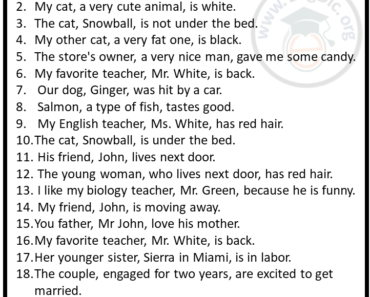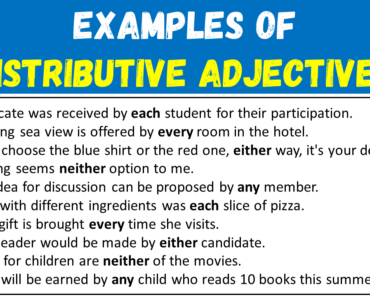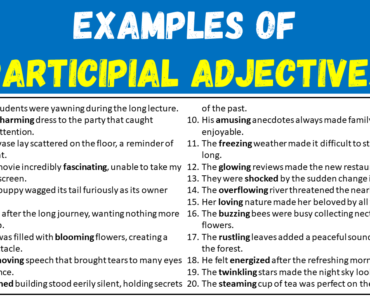5 Examples of Linking Verbs in Sentences! Verbs are essential components of language and are used to express action, describe a state of being, or link words together. Linking verbs, in particular, have the important function of connecting the subject of the sentence with further information about that subject. In this article, we will provide five examples of linking verbs used in sentences and explain their meanings.
Examples of Linking Verbs in Sentences & Explanation
Related: 100 Examples of Linking Verbs
1. Example: Sarah is a doctor.
In this sentence, the linking verb “is” connects the subject “Sarah” with the subject complement “a doctor.” The verb “is” shows the state or condition of Sarah, indicating her profession. It does not express an action or event but rather provides additional information about the subject.
2. Example: The cake tastes delicious.
Here, the linking verb “tastes” connects the subject “the cake” with the subject complement “delicious.” The verb “tastes” describes a quality or characteristic of the cake, not an action it is performing. It gives the reader information about the sensory experience of eating the cake.
3. Example: The flowers smell fragrant.
In this example, the linking verb “smell” connects the subject “the flowers” with the subject complement “fragrant.” The verb “smell” is used to describe the aroma or scent of the flowers, providing sensory detail about the subject. It does not indicate any action on the part of the flowers.
4. Example: The students became restless during the lecture.
In this sentence, the linking verb “became” connects the subject “the students” with the subject complement “restless.” The verb “became” indicates a change in the state or condition of the students, showing that they grew restless over time. It does not describe an action they are performing.
5. Example: He seems unhappy about the decision.
Here, the linking verb “seems” connects the subject “he” with the subject complement “unhappy.” The verb “seems” is used to express a perception or impression about the subject’s emotional state. It does not describe an action or event but instead provides information about the subject’s feelings.







